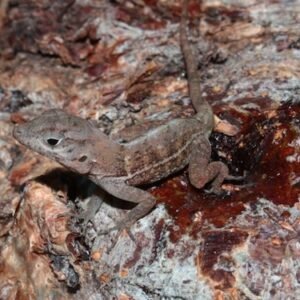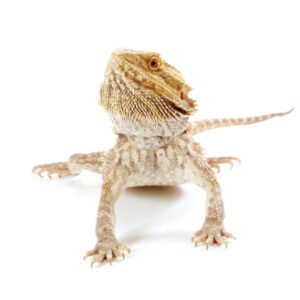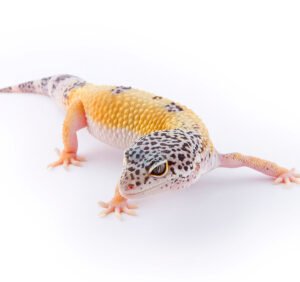Understanding the Albino Leopard Gecko: Characteristics and Care
The albino leopard gecko (Eublepharis macularius) is a striking reptile known for its unique appearance and amiable disposition. Characterized by its pale yellow and white skin, punctuated by reddish-orange spots, this morph lacks the pigmentation typically found in leopard geckos due to a genetic mutation. This absence of melanin not only creates its distinctive look but also influences its behavior and care requirements. For instance, they tend to have more sensitivity to light, which can affect their habitat conditions.
As cold-blooded animals, albino leopard geckos rely on their environment to regulate body temperature. Therefore, ensuring the appropriate heat gradient in their habitat is crucial for their well-being. A range of temperatures, with a warm side around 88°F to 92°F and a cooler side between 75°F to 80°F, allows these geckos to thermoregulate effectively. Additionally, humidity levels should be maintained at around 30-40%, with a moist hide ensuring they can shed their skin properly and stay hydrated. Providing ample hiding spots, using items like caves or foliage, is essential for their sense of security, as they are nocturnal hunters and prefer secluded areas during the day.
Dietary needs for the albino leopard gecko must also be considered to promote health and vitality. Primarily insectivorous, they thrive on a diet of crickets, mealworms, and other appropriately-sized insects. A balanced feeding schedule, typically offering food every other day, is fundamental to prevent obesity. Calcium and vitamin D3 supplements are also necessary to support their skeletal health. Understanding these characteristics and care requirements is vital for any prospective owner seeking to provide a nurturing environment for their albino leopard gecko.
Setting Up Your Albino Leopard Gecko’s Enclosure and Environment
Creating a suitable environment for your albino leopard gecko is crucial for its health and well-being. When selecting an appropriate terrarium, consider a minimum size of 20 gallons, though larger options are preferable for adult geckos. Glass terrariums are commonly used, as they provide good visibility and ventilation. Ensure that the enclosure has a secure lid to prevent escapes, as these geckos can be quite agile.
The temperature gradient within the enclosure is vital. Create both hot and cool zones to allow your reptile to thermoregulate effectively. The hot side should maintain temperatures ranging from 88°F to 92°F, achieved through the use of heating mats or lamps. Conversely, the cool side should maintain temperatures between 75°F and 80°F. Utilize a reliable thermometer to monitor these temperature zones accurately, ensuring your gecko remains comfortable and healthy.
Lighting is another important aspect of your albino leopard gecko’s habitat. While these reptiles are nocturnal and do not require bright light during the day, providing a UVB bulb for about 10-12 hours a day can enhance their calcium absorption and overall health. Be sure to position the light appropriately to avoid overheating.
Choosing the right substrate plays a significant role in maintaining a hygienic environment. Reptile carpet, paper towels, or tile are ideal options, as they are easy to clean and do not pose a risk of ingestion. It is essential to avoid loose substrates like sand, which can cause impaction if ingested.
Decorating the enclosure with natural elements can stimulate your gecko’s instincts. Include caves, climbing branches, and water dishes to provide hiding spots and opportunities for exploration. Regular cleaning and maintenance should not be overlooked; strive to keep the habitat clean by removing waste and uneaten food promptly, and replace the substrate as needed to ensure a healthy living space for your albino leopard gecko.





